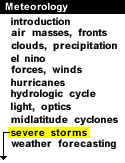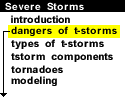
|
Thunderstorm winds also cause widespread damage and occasional fatalities. Thunderstorm "straight-line" winds originate from rain-cooled air that descends with accompanying precipitation. This central Texas windstorm, approaching from the west, was packing 80 MPH winds behind the spectacular appearing gust front. The same thunderstorm earlier produced several small tornadoes, grapefruit size hail, and flash flood rainfall. (Looking west from about 5 miles.)
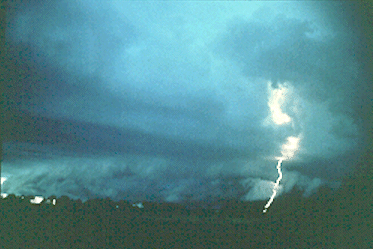
Photograph by: Moller
After the thunderstorm gust front passes and before precipitation, if any, arrives, blowing dust often is kicked up by thunderstorm induced winds. The amount of dust depends on soil type, soil moisture content, and wind intensity.
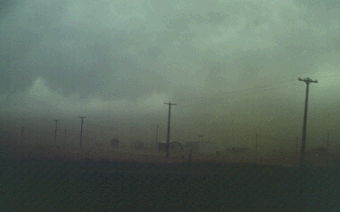
Photograph by: Moller
Note the aviation "wind sock" in the photograph. Winds were estimated to be about 50 MPH at this time along the Texas-New Mexico border east of Hobbs, New Mexico. Severe thunderstorm winds are especially dangerous to aviation interests, particularly aircraft which are on final approach or taking off.
Many western US storms, such as this one in southern Colorado, have extremely high bases and low tops. Don't let the weak appearance fool you! Some of the "dry storms" can produce dangerous microbursts and copious amounts of fire-setting lightning.
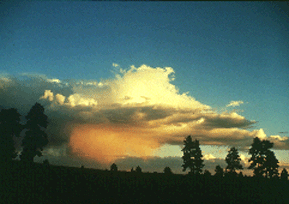
Photograph by: Moller
Recent research has shown that microbursts, both "dry" ones such as this (actually some very light rain may fall with a dry microburst) and "wet" ones frequently are the cause of wind shear induced aircraft accidents.

flash floods, hail |
|

downbursts |


